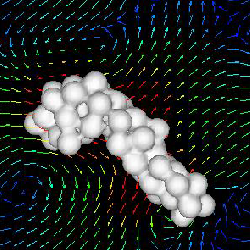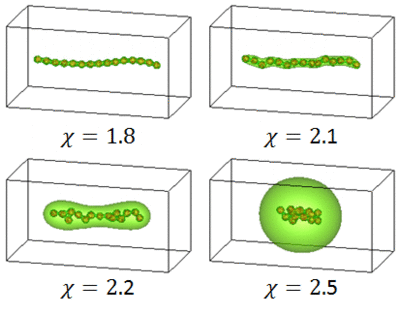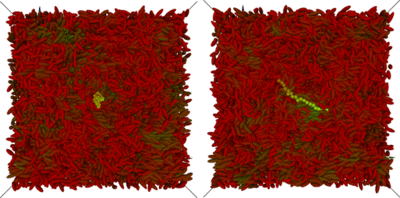

Recently, the role of hydrodynamic interactions in the selection of a kinetic pathway for phase transitions has attracted considerable attention. Here we study this problem numerically by taking as an example a coil-globule transition of a single polymer, which is a prototype model of protein folding. When a swollen polymer collapses into a globule state, hydrodynamic interactions accelerate the transition. We find, on the other hand, that when a rather compact polymer collapses into the same final state, hydrodynamic interactions decelerate the transition due to a slow squeezing process of the solvent. We reveal that the degree of the initial enhancement of anisotropy of the polymer configuration determines whether hydrodynamic interactions accelerate or decelerate the collapsing dynamics. We also discuss the possible relevance of squeezing flow effects in protein folding.

Under construction

Under construction
